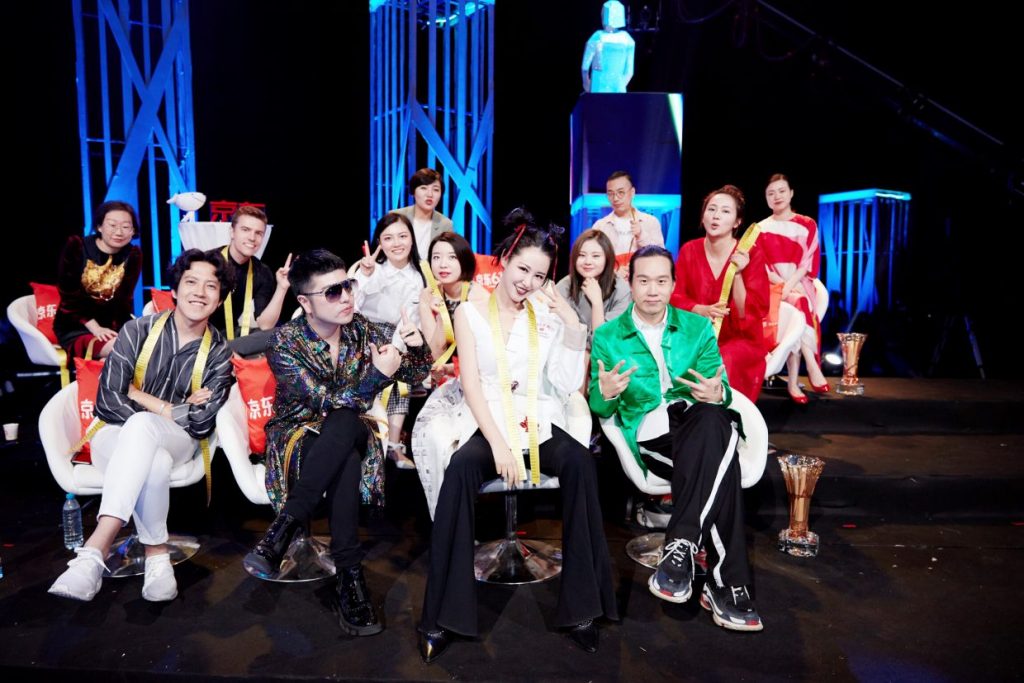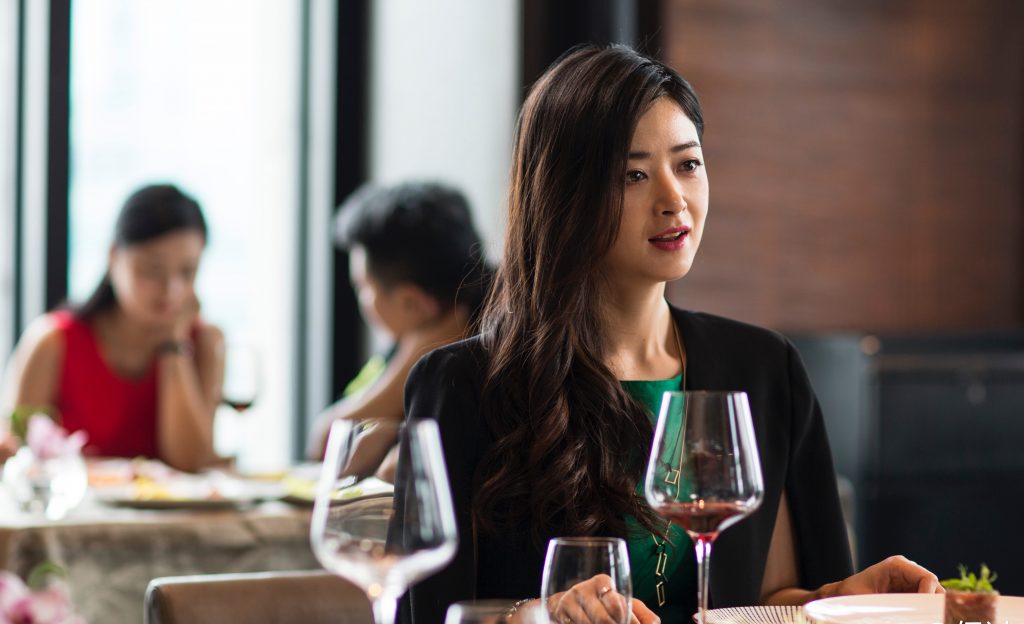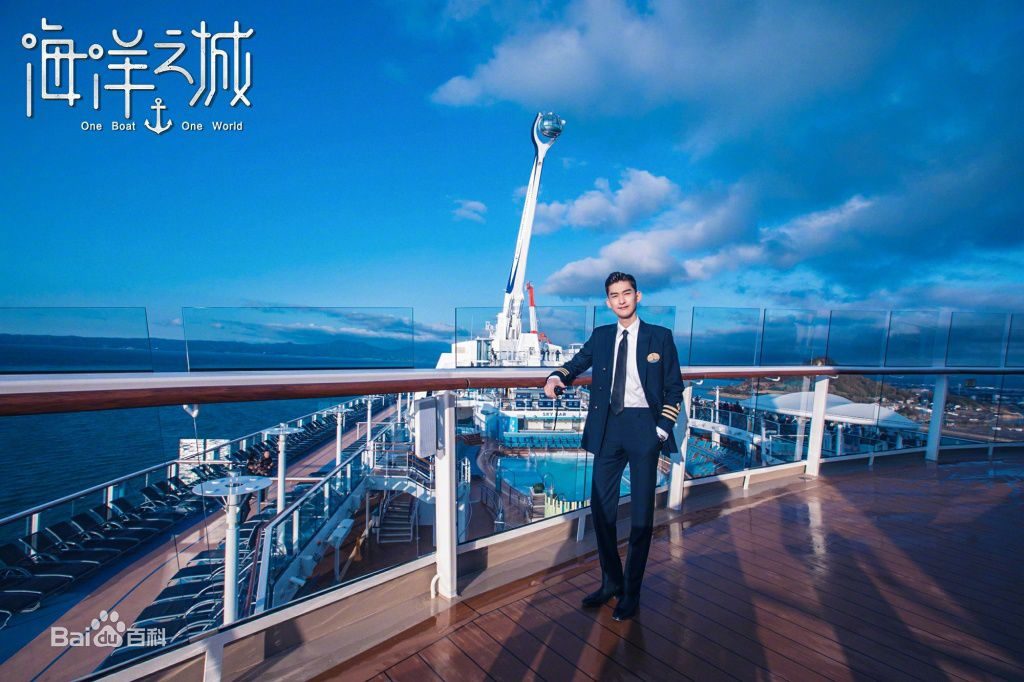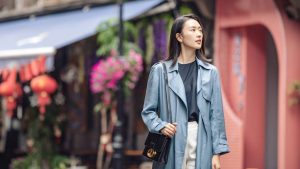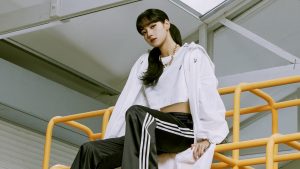“Where I would hope they would go with the show, though I understand why they’ve started off in a very overt kind of sense, is to show that these are young Chinese designers that, generally speaking, live and have their businesses here and are from China, so their actual inspiration or their ‘Chineseness’ comes from the fact that it’s being made by them,” says Sam Waldo, co-founder of Beijing-based eyewear brand Mantra, and a contestant on the show. “Do you necessarily need to put a phoenix or a dragon on it? I don’t think so—I’d think that you can make it more authentic and more appealing by having the creativity of the Chinese designer really shine through as much as possible. In some instances that might involve Chinese design and in some instances it might not.
Waldo opted to be a contestant on the show, partnering up with friend and designer Diana Li, because Mantra itself didn’t have its own clothing line. Mantra, which follows a “buy one, give one” business model, draws inspiration for its own designs from aspects of Chinese culture. Its premium eyewear collection, for example, borrows elements from textiles made by ethnic minorities in China’s Yunnan province.
Though it likely gave his brand exposure—CCTV cooperated with Tencent to broadcast the show live for viewers to watch on their smartphones—Waldo says he guesses the concept for his collection may have been confusing, because it had nothing to do with his actual brand. He and Li placed second behind Li Kun.
Waldo says that behind the scenes, the show wasn’t much like Project Runway at all—most of his designer’s hands-on work, including collaboration with her seamstress and overall production of the garments wasn’t videotaped. Instead, the producers opted for a scene featuring Waldo and Li poring over a Yunnan inspiration board, as well as a few simple shots of setting up and ironing clothing on the day of the show.
“I don’t really fault them for the way they did it. It’s not Project Runway—it doesn’t have the budget or the time investment of a show at that level,” Waldo says. “We weren’t sequestered for days or weeks to participate in it.”
“But from everyone I’ve heard, reactions to the show are generally positive,” he adds. “I think it got most of the way there … But if they’re looking to build something that’s really institutional or at the level of these shows it’s being compared to, I think over time they’ll figure it out and make it more authentic and engrossing.
On Weibo, the reception for Fashion Master has been generally positive so far. A small minority of viewers expressed online that they didn’t care for the Chinese elements in the garment designs, but most commenters applauded the contestants and their work, with many asking where they could buy the clothes. Of course, as Weibo is heavily scrutinized, it’s also worth noting that more critical voices may have been censored.
Netizens praised the judges for their wisdom and for being an inspiration to viewers at home. One wrote, “It makes me sad every time I see Chinese people scoffing at ‘Made in China.’ Before the world can fall in love with Chinese design, we must first fall in love with Chinese design ourselves.”
Even if audiences don’t get a behind-the-scenes look at the design and production process, those watching the show can get a snapshot of the cultural dialogue surrounding Chinese luxury fashion consumers—albeit, as it’s presented in a state-owned television medium. For example, when Li showcased her collection on the season premiere, one judge, Zhang Jing, an established CCTV Finance host, suggested that if it’s priced right, Li’s handbag collection might be attractive—and a less “risky” purchase—to consumers who might otherwise buy luxury brands.
“Many girls likely have the same feeling that when they buy their first bag, if they want to look a little more fashionable, they’ll definitely want to get a foreign luxury brand bag,” the host tells Li on the show. “But some girls, when they’ve just entered the workforce, might not have much money to spend so they’ll cut down on buying food so that they can buy a bag. But what they won’t realize is they might end up buying a fake!
Zhang continues, addressing Li Kun: “So if the price of your bag is actually really reasonable, why would I bother spending so much money on a bag from a foreign luxury brand, only to still have people think that I might have bought a fake? In that case, I would be better just buying a bag with some character, like this one.”
If viewers care to take Zhang’s comments to heart, they can visit Fashion Master’s exclusive online store on JD.com’s e-commerce platform to shop the collections themselves. “It’s incredibly exciting to introduce outstanding up-and-coming Chinese designers to a huge audience through this show,” Ding told Jing Daily. “A number of hot, young designers have used it as a launchpad to open their own flagship stores on JD, including Away Lee, Ruby Fang and Chen Xing.”
JD is only one of China’s major e-commerce platforms that are bringing China’s emerging fashion talent to the masses in order to diversify their product offerings and offer a unique asset to global markets in the future. Both JD and Alibaba’s Tmall were present at Shanghai Fashion Week, in addition to high-luxury online shopping platform Secoo, which debuted an e-commerce channel for 100 indie local designers at the event.
Waldo says he thinks that the show might actually pose an opportunity for luxury brands as well—he, himself, is counting on his episode to give his own premium independent brand a little boost.
–This article originally appeared on Jing Daily.


